How a man learned to wear things on his back
The history of the backpack goes back thousands of years: it, like many other human stories, developed non-linearly. In different eras, inventors and artisans came up with their own versions of a bag to carry things over their shoulders. Old ideas were forgotten, but human biology itself led people on different continents to return to the same concept. We traced all the way - from the first wooden to a technologically advanced modern backpack.
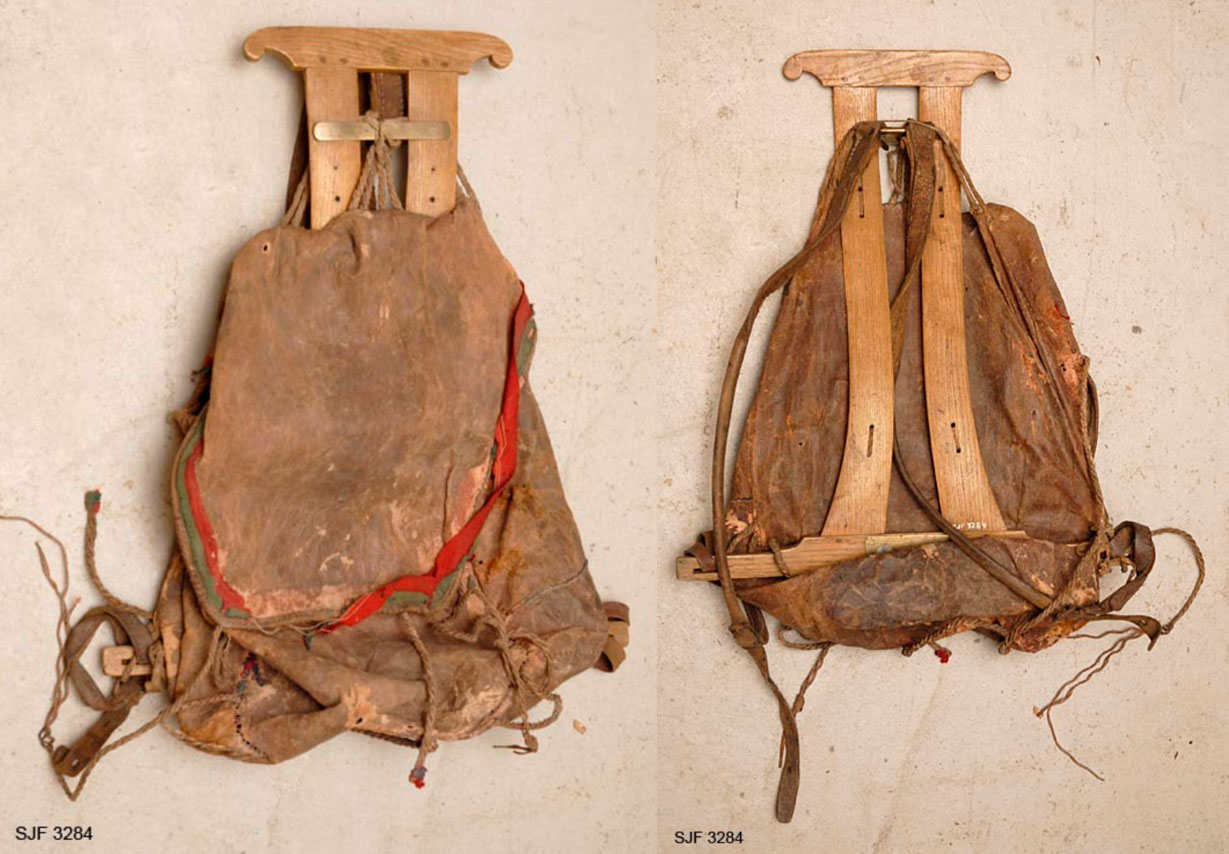
More than 5300 years ago, a man lived in the Ötztal Alps in Tyrol, who was apparently a shepherd. Unfortunately, his life ended at the age of 45 in a very tragic way: an elderly man by the standards of that time was shot from a bow and he bled on the side of a mountain. The body was frozen into a glacier, where two German tourists found it in this form in 1991.

Next to the well-preserved mummy (which was given the name "Ezi") was a lot of personal equipment. Of course, fragile things did not endure the test of time well, so in some cases you can only make assumptions about their purpose. Only a bow, a quiver with arrows and a flint knife look recognizable. And there is still controversy about the curved rod from hazel - but many archaeologists are sure that this is the basis of the wooden "backpack".
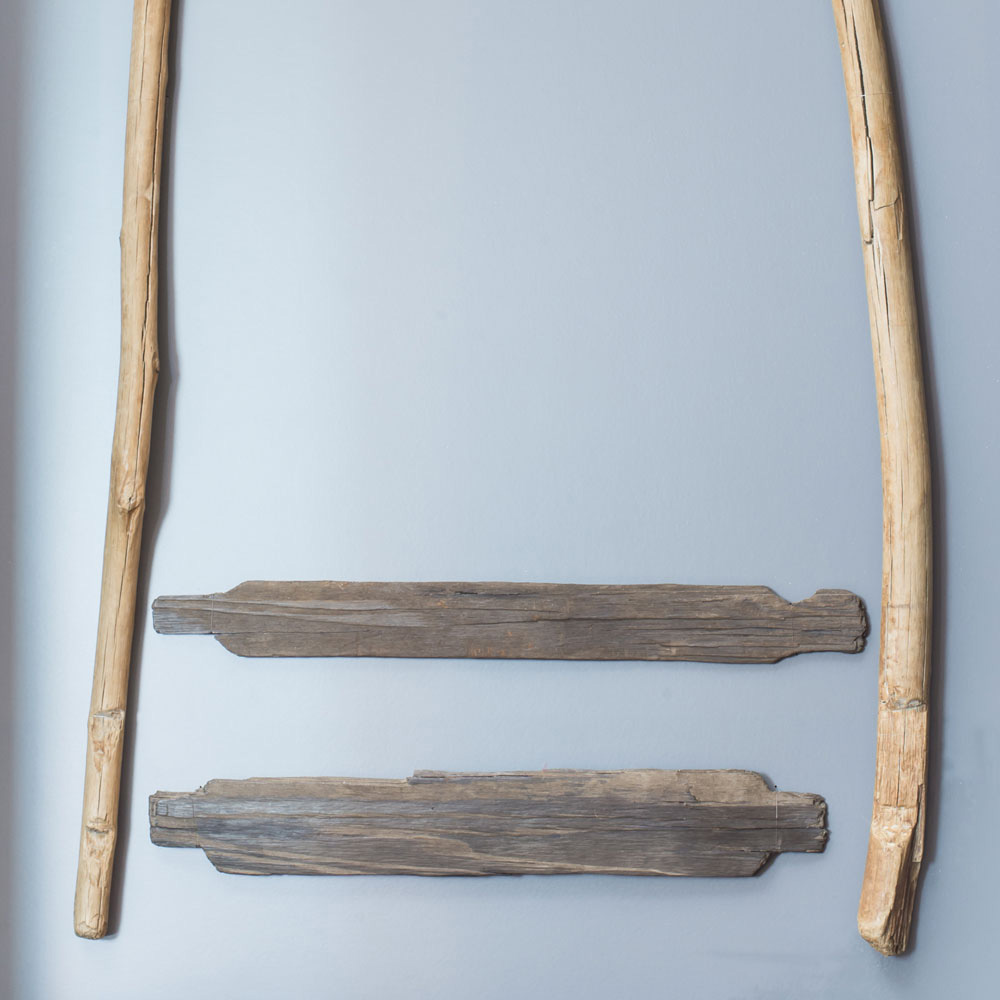
Together with other debris found nearby, a more complete picture is obtained. It is possible that a bag of skins, decaying over millennia, was attached to the surviving frame, in which Etzi transferred his simple belongings.

A replica of the find, restored to the state of a backpack, was exhibited at the Dortmund Museum of Natural History. She has a main compartment and leather handles. But, most importantly, the guess about the backpack is confirmed by the fact that in the Alps there are traditional wooden shoulder bags. They are made to this day, and such devices are called Kraxe.
Ancient empires and states did not particularly favor leather backpack-like bags. One of the most popular means of carrying things and goods was cheap in the manufacture of baskets. They were in every ancient Egyptian house, and it was in the baskets that the slaves carried provisions and personal belongings behind the Greek hoplites. The resulting logistical difficulties were the main reason that the wars ended quickly.
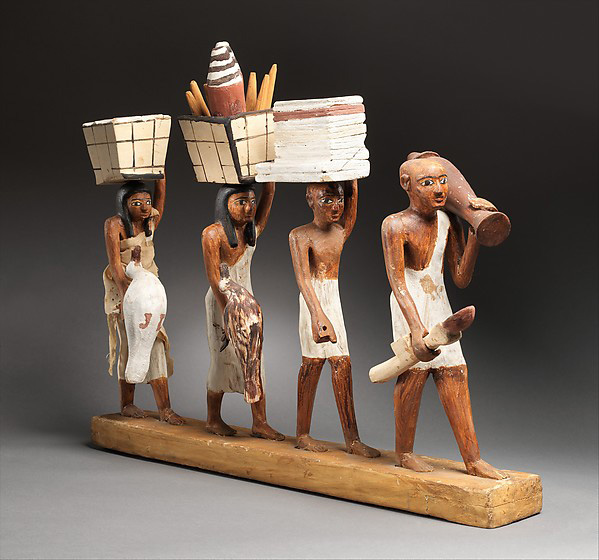
Soldiers of the Roman Empire already wore loci - satchels that were attached to a camping pole. Part of the equipment was already suspended from the bag itself. As a result, the property of the imperial warrior dangled in a “bag” behind his back and over his head.
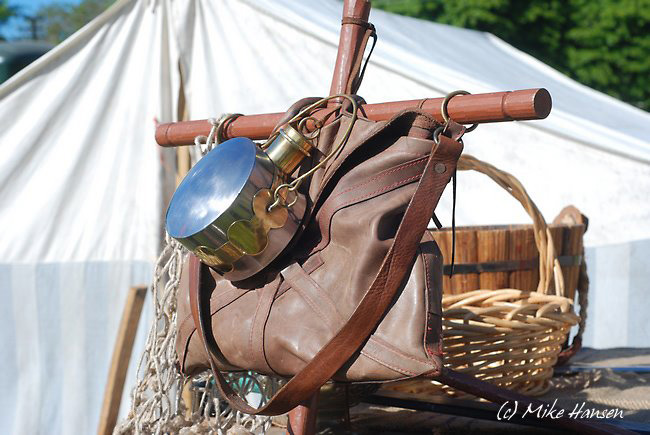
In the Middle Ages, appliances appeared in Europe that looked much more like a modern backpack. Baskets with straps were hung behind him to work in the field and carry goods. By the 19th century (perhaps even earlier), numerous porters were working in Germany and France, who were hauling loads on traditional wooden frames descended from the Etzi backpack. The alpine version, the aforementioned Kraxe, featured a characteristic wooden shelf.
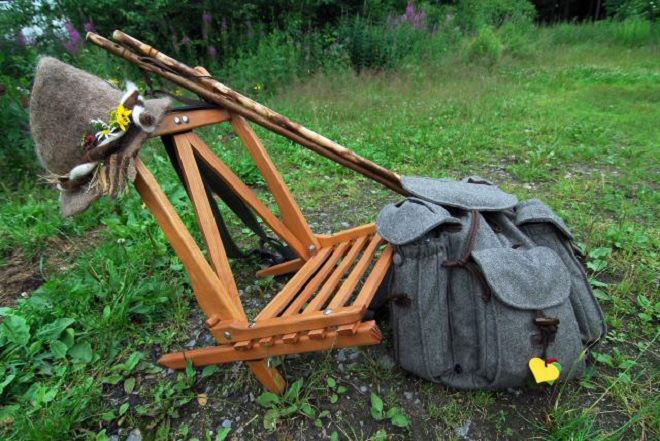
Such frameworks have become generally accepted in the Scandinavian peninsula. One of the best-preserved European backpacks is in Norway. It dates back to about 1880 and consists of two parts: an ash frame and a leather tote bag. The backpack is called Sekk med Meis and is part of the Norwegian Forest Museum collection.
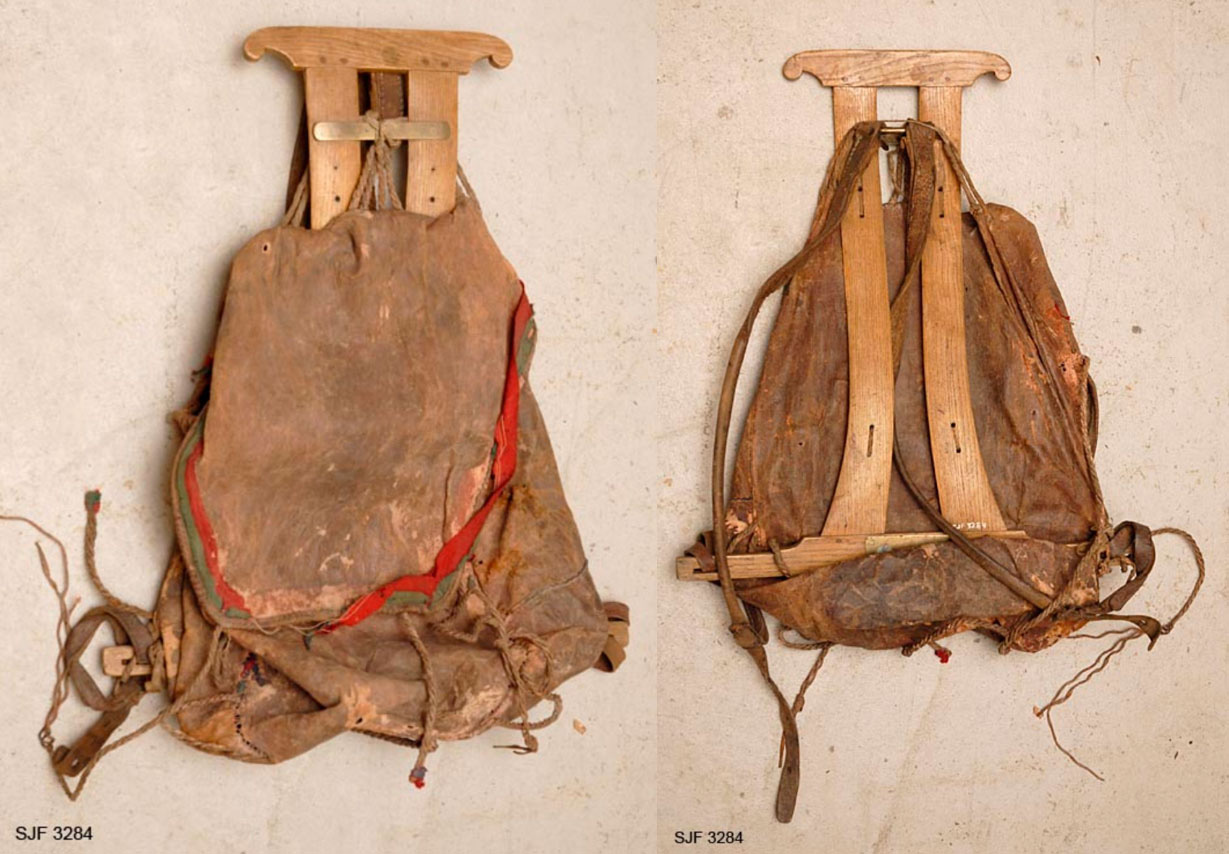
Fast forward from Europe to Asia, namely to the Asian part of Russia. The indigenous peoples of Siberia also needed bags for mining and things that would be convenient to use in difficult taiga conditions. Therefore, frame "backpacks" that are vaguely reminiscent of Ezi's outfit: ponyags and flyers became widespread in the region. They were made centuries ago, and continue to be made today.
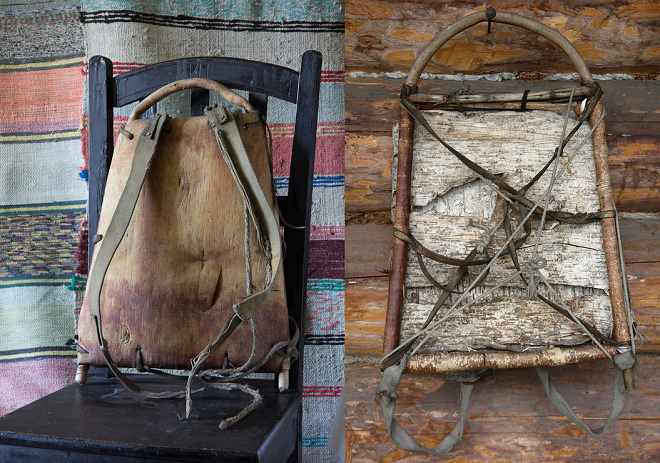
Ponyaga is the most difficult device to manufacture. The basis is bird cherry, willow, gland rod, curved by an arc and connected by an upper jumper and a shelf. The resulting frame is covered with birch bark, the smooth side of which should lie on the back. The load is tied to the frame with straps, so that the ponyaga has virtually no volume limit. The half-ring of the frame protruding from above serves as the handle of such a “backpack” for carrying in hands. Nevertheless, the main part of the scuff is worn on the back on two leather straps. One of the straps is usually worn on a peg at the bottom and is held by tension, if necessary it is easy to loosen and quickly throw off the burden.
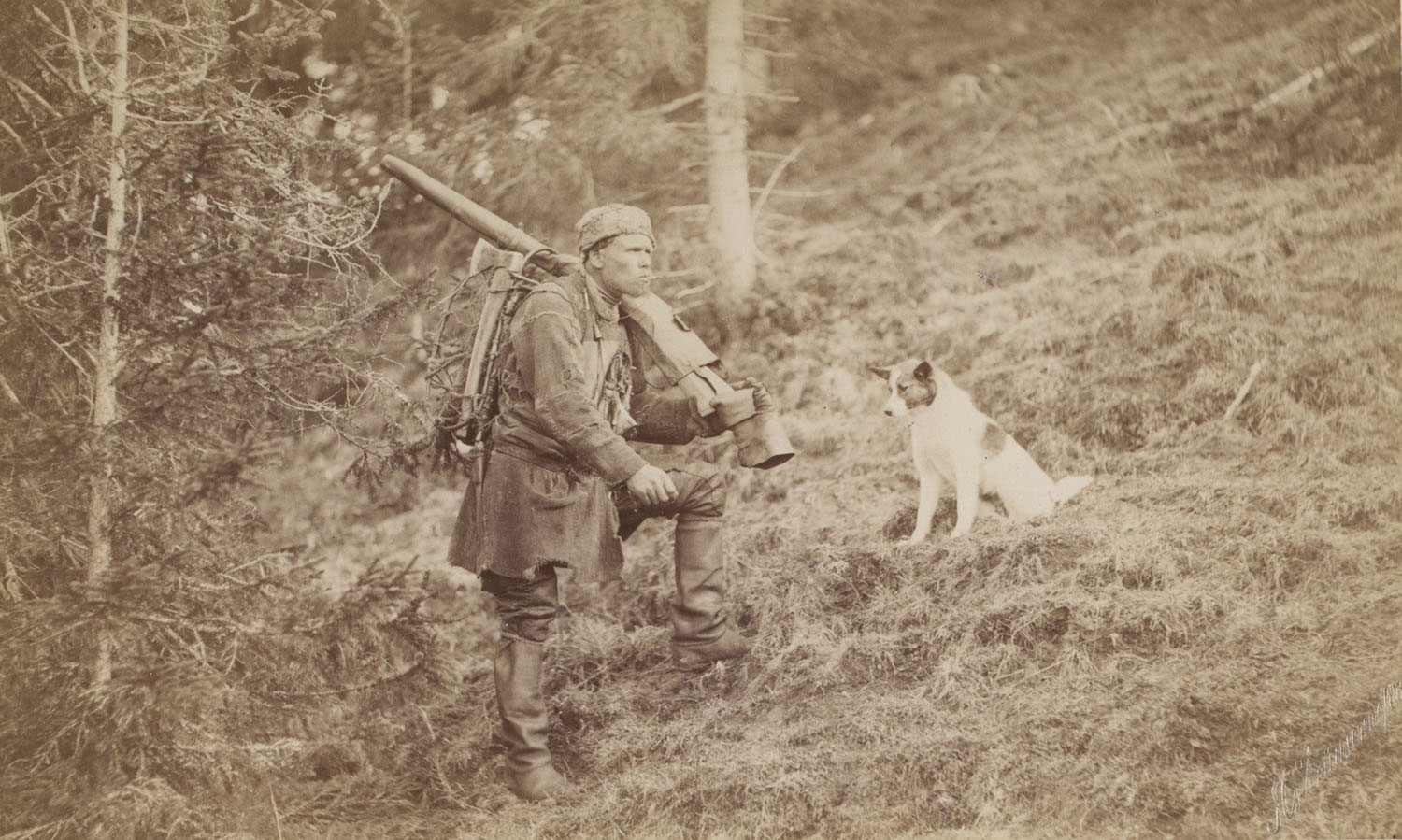
A flyer is a bale carrying frame made of two branches with symmetrical forks. Jumpers and straps were attached to one of them. The load is clamped between two "slingshots" that are connected to each other by ropes. The resulting "backpack" is very comfortable on the back, less stretches the shoulders due to the high center of gravity, and is easily restored in the event of a breakdown.
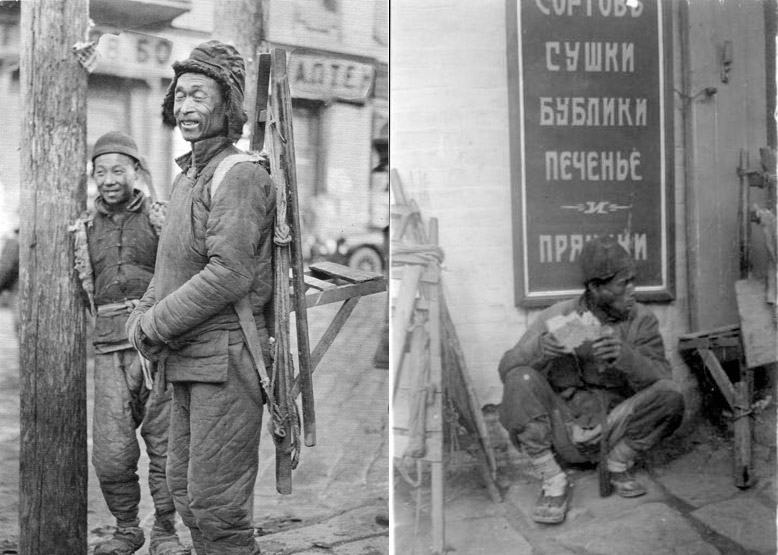
Different flyer options were found throughout Siberia and Asia. For example, in Vladivostok at the end of the 19th century “flyers” and coolies were working.

In Korea, a similar design was called 지게 ("chige"). The first written mention of it dates back to the end of the 17th century, but it can be said with great certainty that such wooden backpacks were actively used on the peninsula in the 7th century.
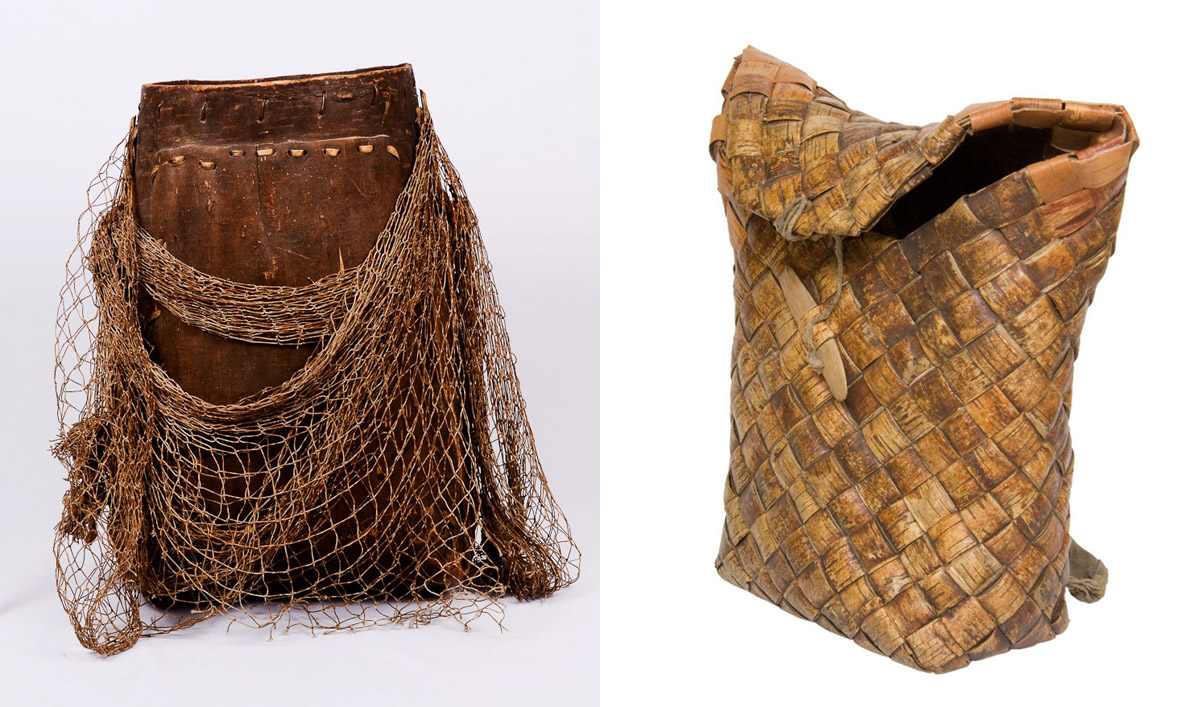
And in the rest of Russia, especially in the Russian north, birch bark knaps — woven and stitched together with spruce roots — were quite actively used. In general, a traditional framed backpack and a basket with straps in one form or another are found throughout the globe, on all continents.
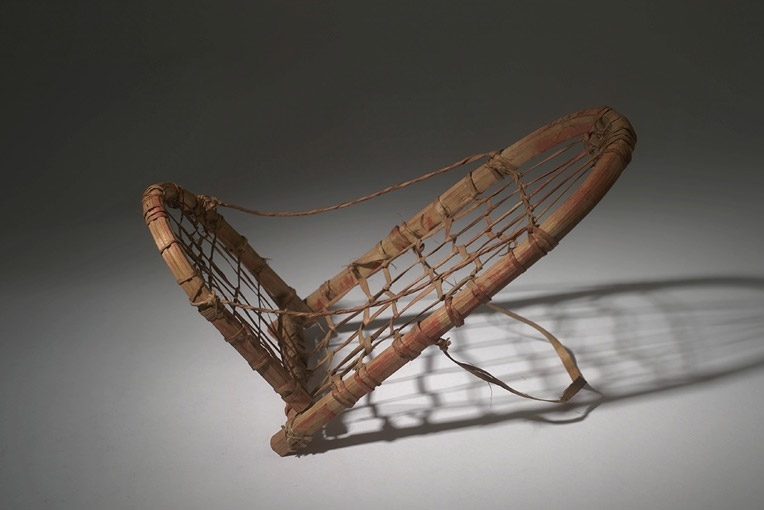
If civilians in Europe and Asia had enough baskets and “flyers” to carry goods, then the soldiers definitely needed more convenient, durable and practical bags. This became especially noticeable after the 16th century, when the use of mercenaries began to decline and the European armies required uniform equipment. The natural evolution of soldier's baggage led to the fact that in the XVIII – XX centuries army satchels were widely spread.
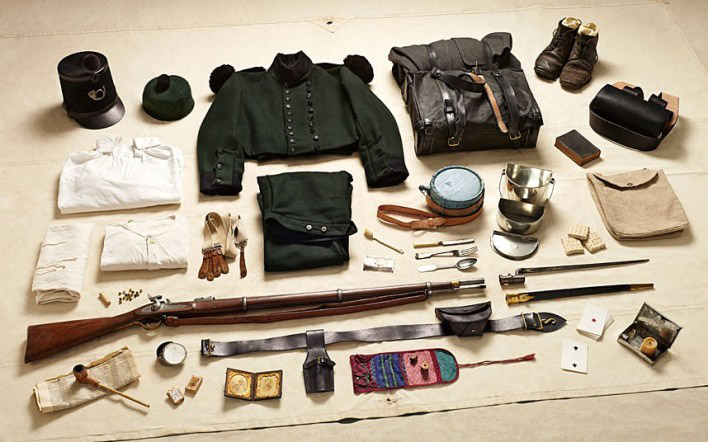
Remotely, the satchel resembled a Roman locus, only it was removed from the pole and hung on a soldier by two straps. From above, an additional load, for example, a rolled overcoat, was often tied to a satchel. The material of the bag was either durable leather or cheap tarpaulin and cloth. Such satchels were part of the uniform of the British and French troops, they were used in the army of the Russian Empire. In the latter, in 1882, a waterproof canvas canvas bag was also put into circulation, which was inherited by the Red and then into the modern Russian army.
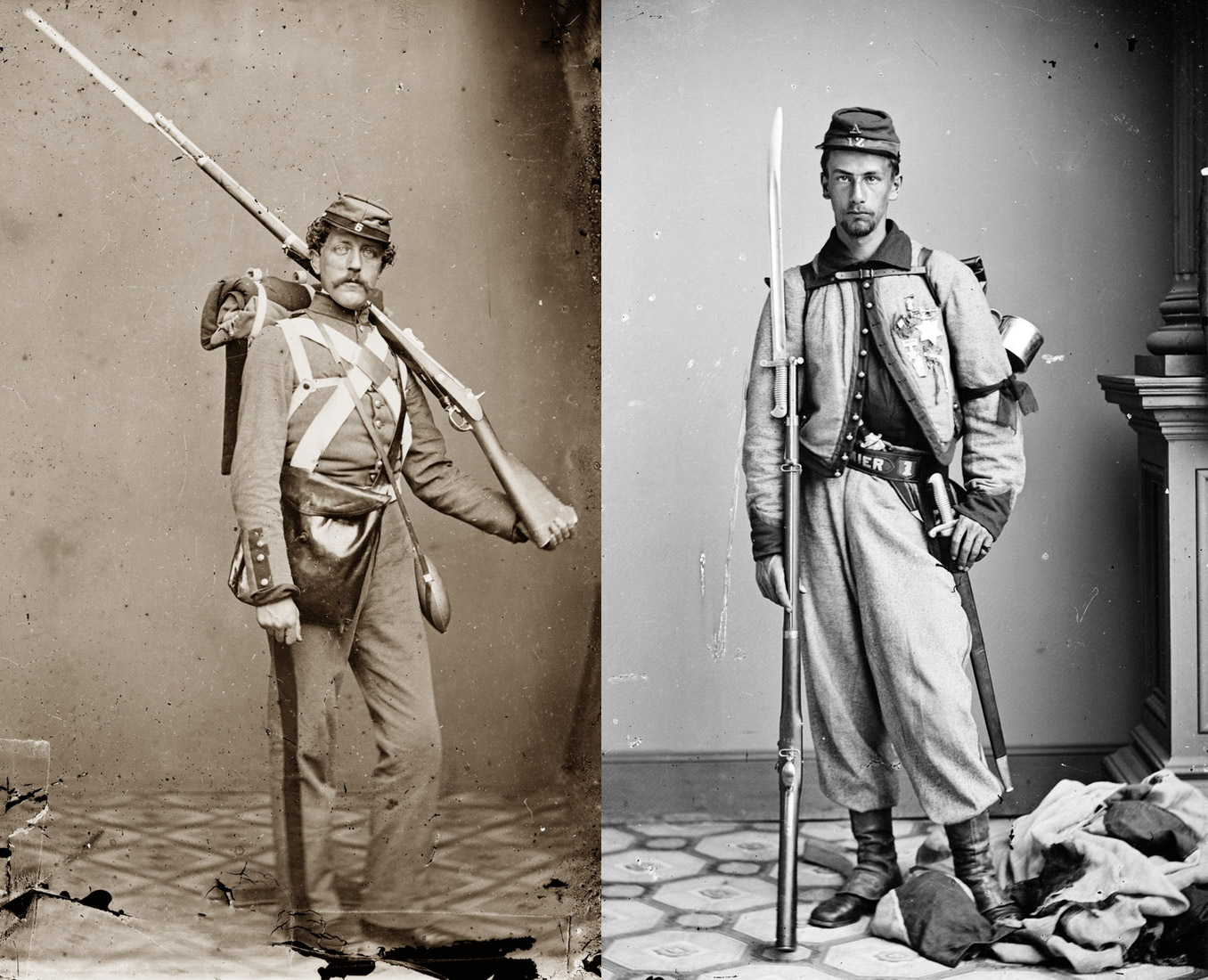
In the European colonies in North America and the young American state, the military also used army knapsacks. During the civil war of 1861-1865, two types of such bags were in use: hard and soft. Both of them did not differ in convenience, the straps dug into the chest and delivered serious discomfort to the marching soldiers.
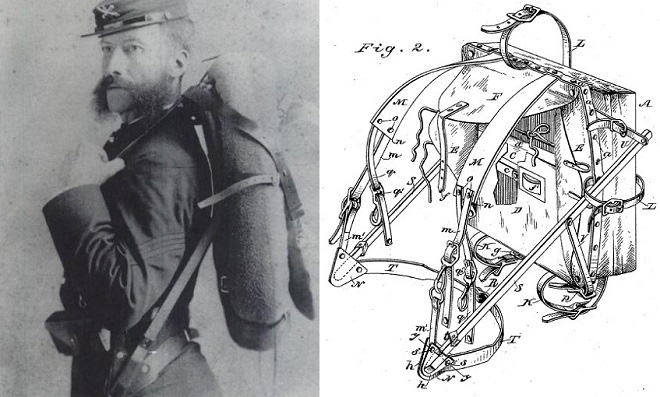
Therefore, after the conflict ended, in 1866, Colonel Henry S. Merriam patented a new type of army satchel: with a rigid wooden frame that would redistribute the load. The same frame was supposed to serve as the basis for a small tent.
For a long time, the inventor was not able to start the production and marketing of his development. However, in the army there was a request for more convenient bags, so that the Merriam satchel became a fairly massive and moderately well-known military model.
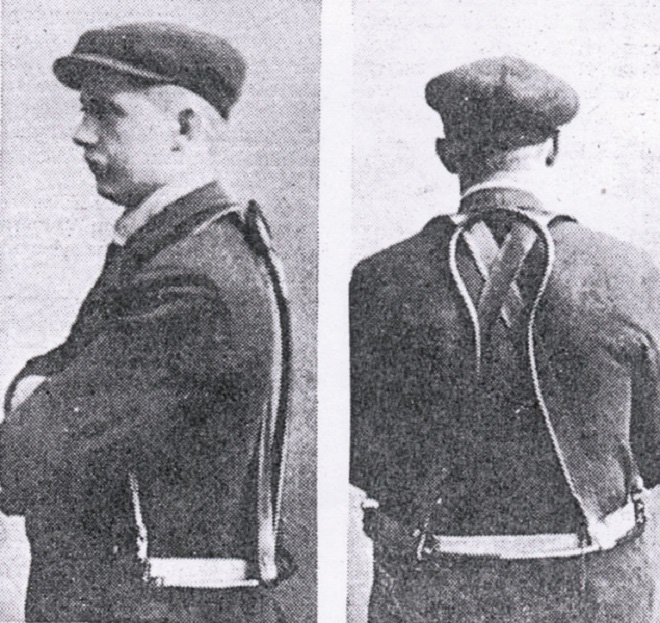
Twenty years later, the Norwegian innovator and entrepreneur Ole Bergan has already developed a “civilian” backpack with a rigid frame made of light tubular steel. The Norwegian believed that the bag should be adjusted to the height and shape of the body of its owner.
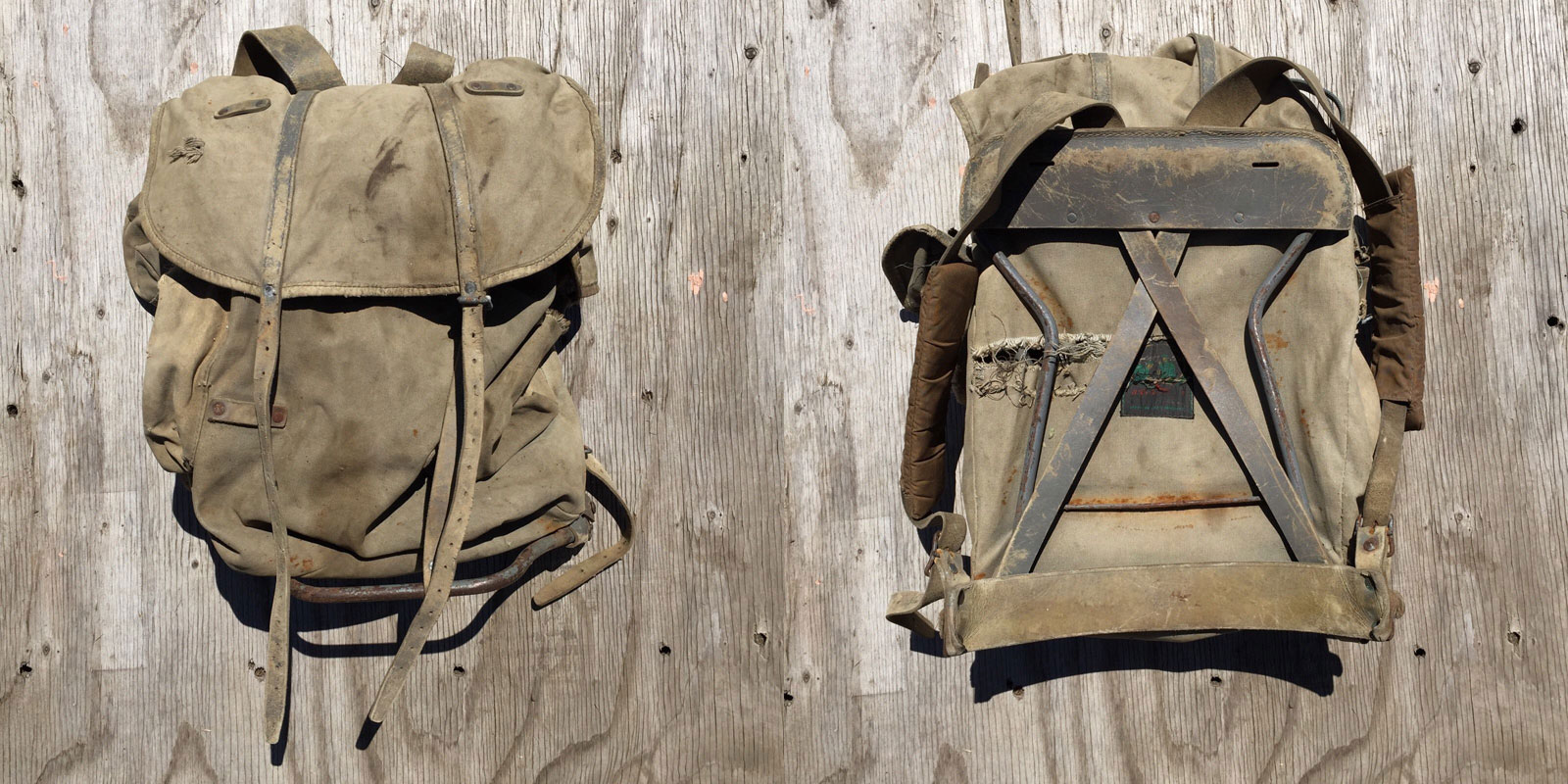
Bergan achieved this effect due to the simplest form of the frame, which was remotely based on the historical Sekk med Meis. Products brand "Bergans" has gained worldwide fame, and the company exists today.
The next innovation in the development of the backpack industry is associated with a phenomenon that is viewed very negatively in the modern USA: with commercial cultural appropriation. In the 1920s, the American hunter Lloyd F. Nelson traveled around Alaska with a traditional frame backpack made of wood and seal skins, borrowed from the Inuit.
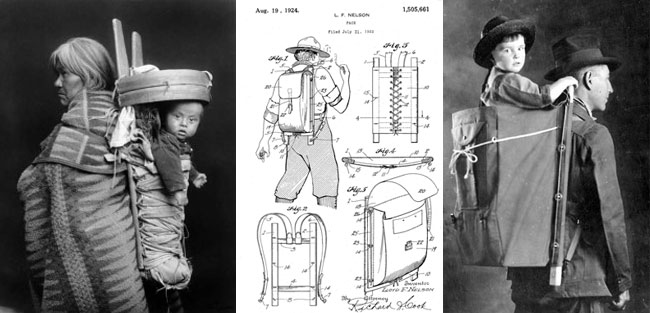
Since the convenience of the Inuit kitty was not the highest, the enterprising trapper modified it, patented and launched mass production of the Trapper Nelson's Indian Backpack. Unlike the prototype, the improved model more efficiently distributed the weight on the back. Later, the development of Nelson began to be called the "Alaskan backpack"; so a hint of the original inventors of frame luggage disappeared even from its name (against the background of this story, the modern battle of the American Apple for the copyright on the shape of the smartphone becomes clear).
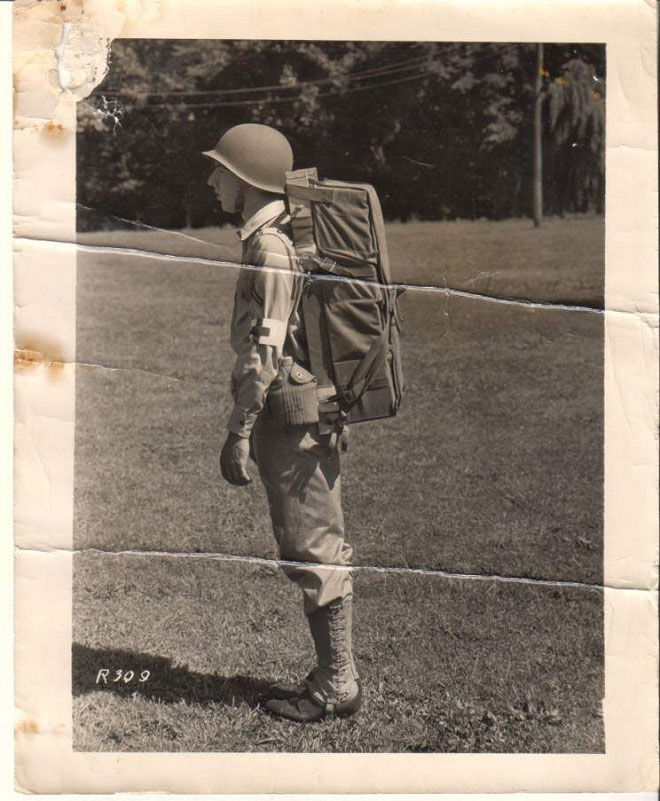
The Alaskan Backpack was later adopted by the US Army.
Although the 20th century began for a backpack no better and no worse than previous centuries, it was at this time that bags with straps really went to the masses. As you may have noticed, the proto-backpack was mainly used by those who worked in the forest, carried heavy loads, or served in the army. But not the average man.
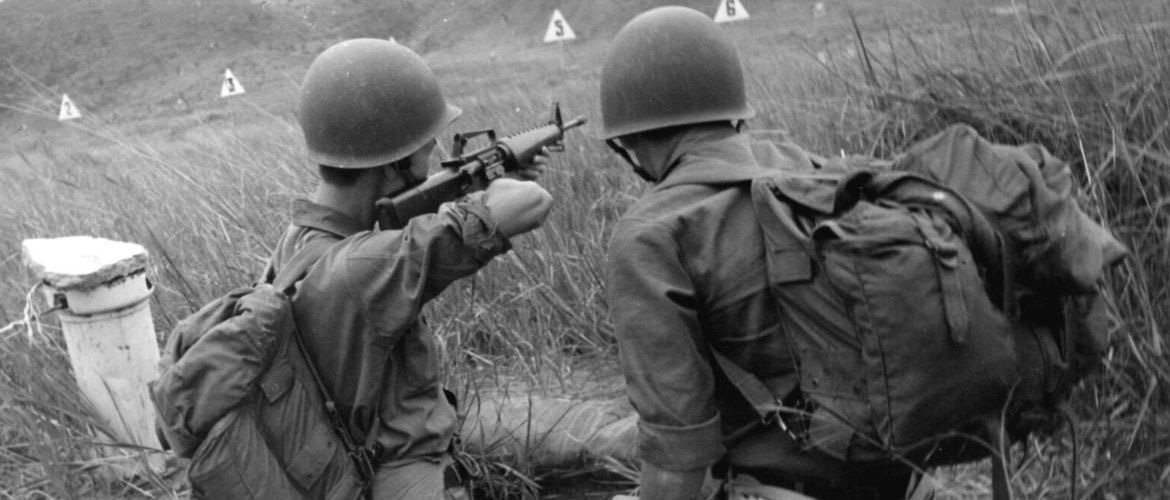
In 1938, Gerald Cunningham, a veteran of the American 10th Mountain Division, was one of the first to think of adding zippers to backpacks that appeared a couple of decades before. This landmark event was one of the major turning points in the history of the backpack. A convenient clasp made it possible to use completely different forms and more effectively distribute weight, which was previously impossible to achieve. Cunningham later founded his own travel equipment company.
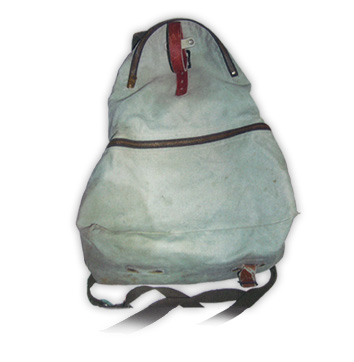
Another important milestone in the history of backpacks was nylon. Synthetic material was first synthesized in 1935 in the laboratory of the American company DuPont, which spent almost a decade on innovative chemical research. Since 1938, a new material - "durable as steel, thin as a spider web" - began to be actively used in the production of consumer goods, from toothbrushes to stockings and clothes. From 1942 until the end of World War II, all nylon was used for military purposes: parachutes were sewn from it and paracords were made.
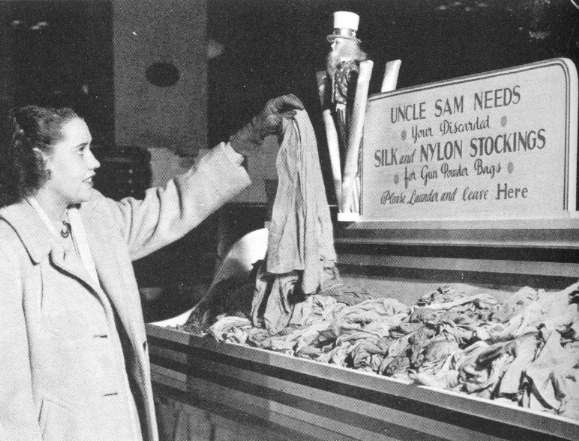
As in the case of other technologies, the war opened up new areas of application of nylon and served as an excellent “marketing campaign”. When it was time to return to “civilian” production, DuPont could not cope with the increased demand - therefore, women cut old “parachute” fabric and awnings to sew clothes from them. One of these seamstresses was Californian Nena Kelty. Her husband, a tourist enthusiast Dick Kelty, came up with how to improve army backpacks with a frame. In 1952, they together launched the home production of new items: Dick soldered frames, Nena sewed everything else.
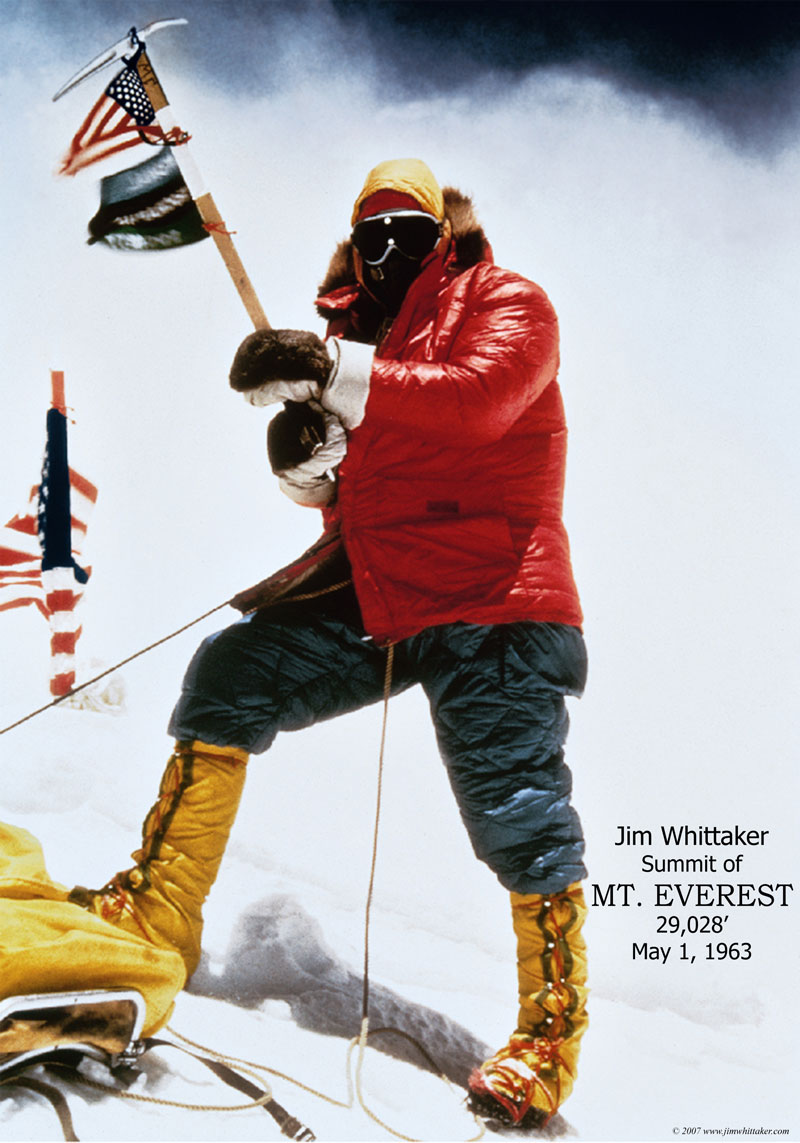
The “garage” business of the Kelti spouses eventually turned into a serious brand of tourist equipment. It was with such a backpack that the mountaineering team of Norman Direnfoot and Jim Whittaker conquered Everest in 1963. Then the popular design was finalized and improved in the American army - the ALICE project (“Universal lightweight individual transport equipment”) was obtained.
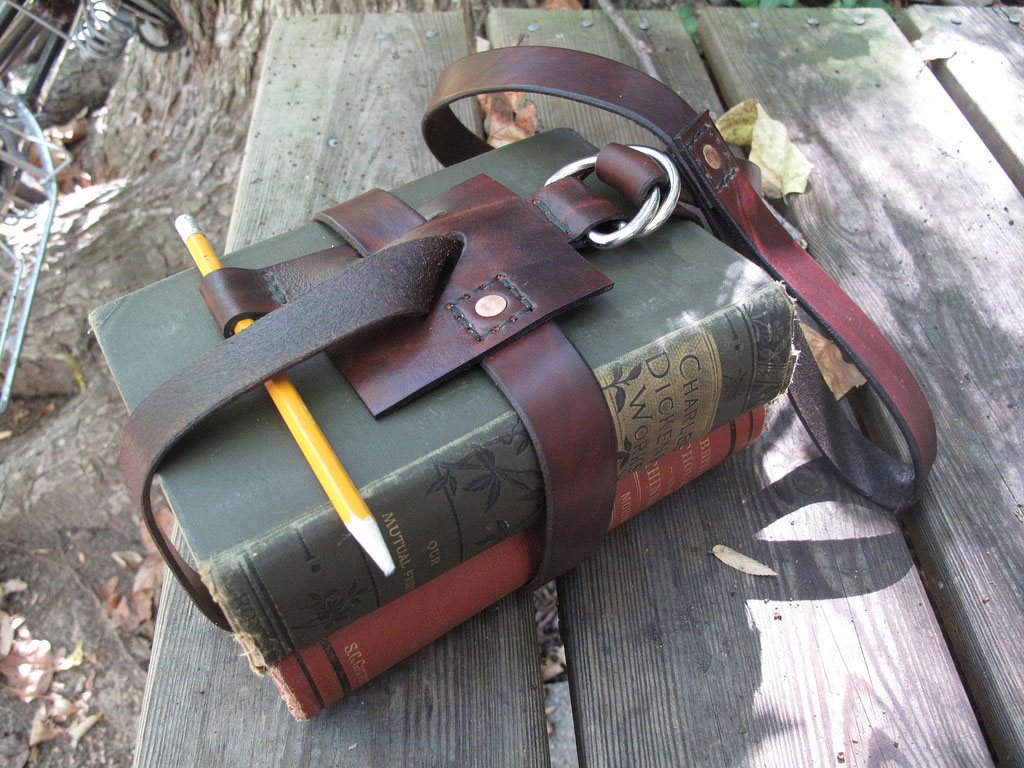
Interestingly, it was during these decades that backpacks began to be used in everyday life. Perhaps the first to do this was schoolchildren. Until the 30s, children tied textbooks with leather belts and wore them in this form, but already in the 40s, schoolbags and satchels replaced the belts. A strict image of a characteristic school bag took shape in the 50s and lasted almost unchanged until the 80s.

The vibrant fashion of the 70s and the heyday of the hippie era led to the fact that backpacks also flourished. Thanks to the efforts of Jerry Cunningham and Jansport, which opened in 1967, light everyday backpacks for young people with free spirit appeared. Sewn from nylon, vinyl and leather, with the obligatory zippers, bright color and without the rigid structures characteristic of durable tourist and military models, these democratic bags could be carried by a dirty hippie or a college student.
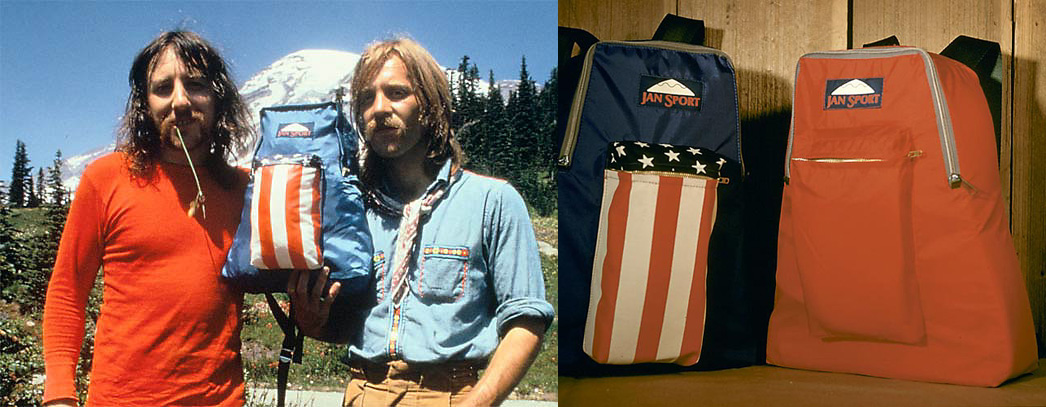
In the 80s, bright children's bags with drawings gained popularity for the first time. Already in the 90s, a school backpack sewn from synthetics became the most familiar thing. In the following years, it gradually increased in size as the school load increased, literally swelling in front of the eyes from textbooks and notebooks. The grandfather’s portfolio was definitely not able to contain all the things a student needed at the beginning of the 21st century.
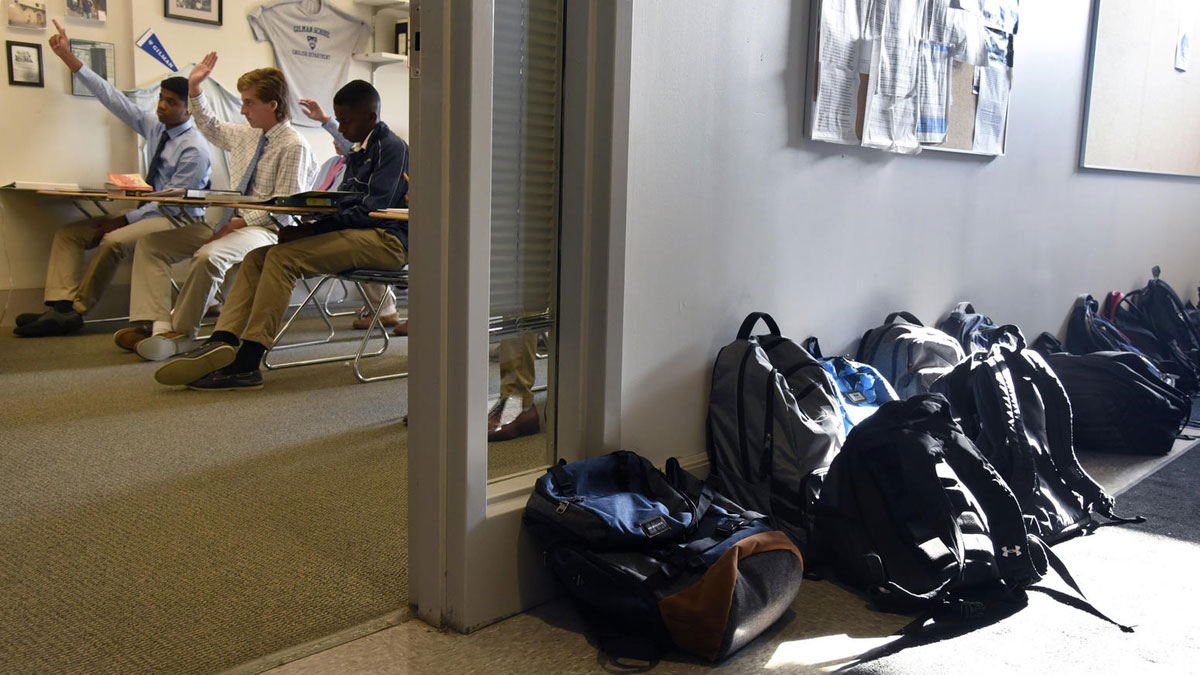
The present of a backpack is expressed in two serious trends, one of which is facing the future, and the other is facing the past. The latter is expressed in expensive “vintage” everyday models made of leather and natural materials, with a claim to a special, “nostalgic” style.
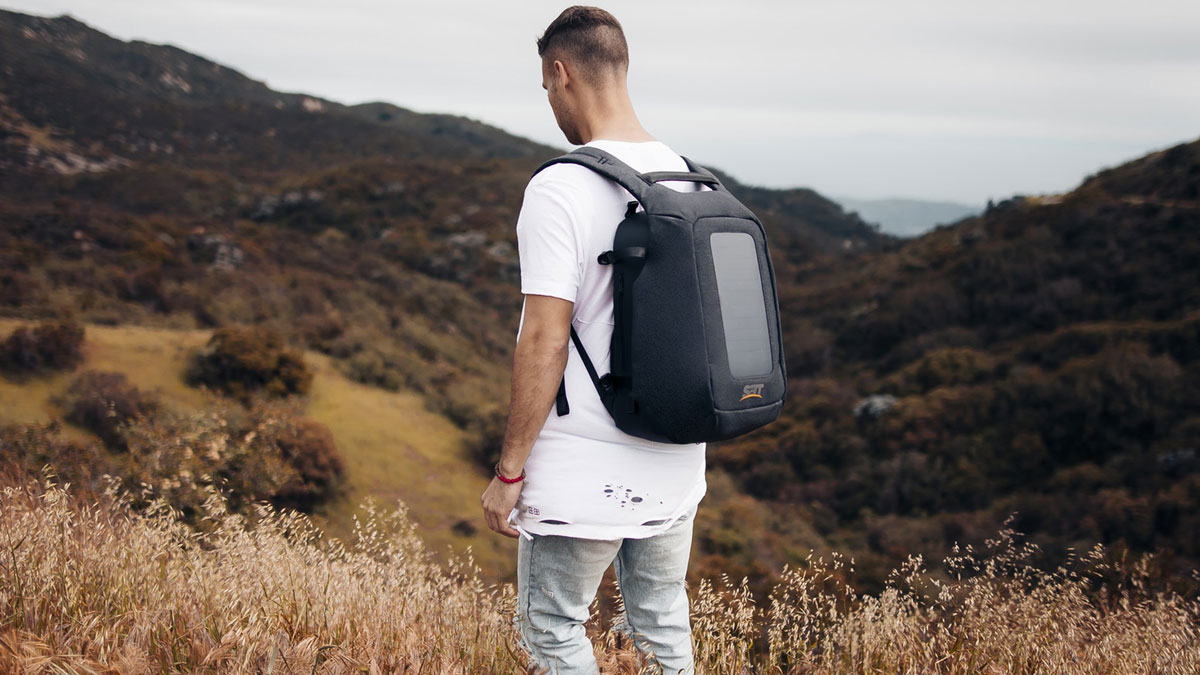
The “futuristic” trend is much more interesting. It is embodied in specialized high-tech backpacks for tourism, travel, everyday use and carrying gadgets. As a rule, they are made from the newest, water-resistant and durable materials, from the ultra-dense Dainema to Kevlar. Often there are built-in solar panels, power banks, GPS sensors and various sensors.
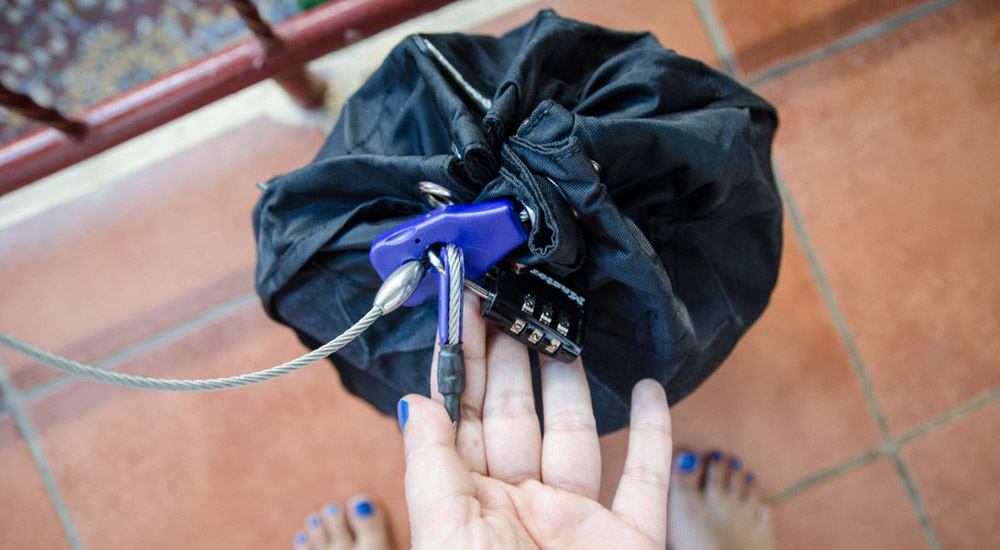
The most important changes, as before, affect the shape and basic functions of the backpack. The next important frontier was the safety of carrying property.
The answer to this challenge was steel and titanium cables embedded in webbing, wire mesh and locks (including code locks).

But the lock on the backpack belongs to the category of exotic, because using it is constantly inconvenient. In search of alternatives, the Dutch brand XD Design was particularly distinguished. Its designers were the first to guess the redrawing of the main compartment of the backpack so that the zipper was hidden by a thick fold of fabric and due to this it became inaccessible to the wrong hands. The successful concept first gained recognition on the Kickstarter crowdfunding platform, where in 2016 it raised about $ 800,000, and then around the world. The success of the project, dubbed Bobby , led to a whole new wave of “anti-theft” backpacks.
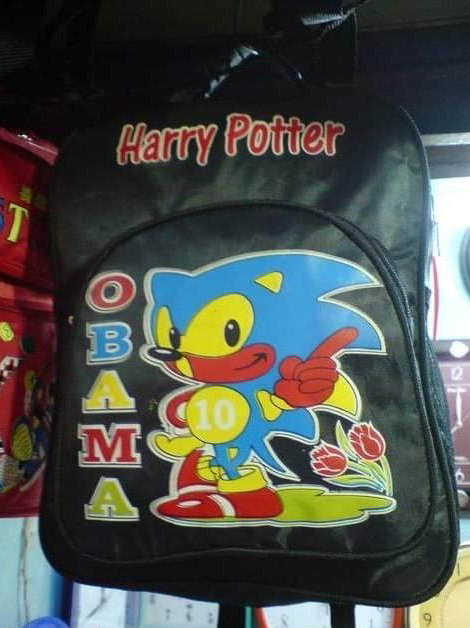
These ideas and innovations exist against the backdrop of thousands of products manufactured in Chinese factories, ready at any time to flood the whole world with a multi-colored backpack tsunami - there would be a demand.
Have we missed some important stage in the development of the backpacking industry? Be sure to share your opinion on this subject in the comments!



Backpack of Etzi (Tyrolean Ice Man) - 3300 BC
More than 5300 years ago, a man lived in the Ötztal Alps in Tyrol, who was apparently a shepherd. Unfortunately, his life ended at the age of 45 in a very tragic way: an elderly man by the standards of that time was shot from a bow and he bled on the side of a mountain. The body was frozen into a glacier, where two German tourists found it in this form in 1991.

Next to the well-preserved mummy (which was given the name "Ezi") was a lot of personal equipment. Of course, fragile things did not endure the test of time well, so in some cases you can only make assumptions about their purpose. Only a bow, a quiver with arrows and a flint knife look recognizable. And there is still controversy about the curved rod from hazel - but many archaeologists are sure that this is the basis of the wooden "backpack".

Together with other debris found nearby, a more complete picture is obtained. It is possible that a bag of skins, decaying over millennia, was attached to the surviving frame, in which Etzi transferred his simple belongings.

A replica of the find, restored to the state of a backpack, was exhibited at the Dortmund Museum of Natural History. She has a main compartment and leather handles. But, most importantly, the guess about the backpack is confirmed by the fact that in the Alps there are traditional wooden shoulder bags. They are made to this day, and such devices are called Kraxe.
From baskets to Kraxe
Ancient empires and states did not particularly favor leather backpack-like bags. One of the most popular means of carrying things and goods was cheap in the manufacture of baskets. They were in every ancient Egyptian house, and it was in the baskets that the slaves carried provisions and personal belongings behind the Greek hoplites. The resulting logistical difficulties were the main reason that the wars ended quickly.

Soldiers of the Roman Empire already wore loci - satchels that were attached to a camping pole. Part of the equipment was already suspended from the bag itself. As a result, the property of the imperial warrior dangled in a “bag” behind his back and over his head.

In the Middle Ages, appliances appeared in Europe that looked much more like a modern backpack. Baskets with straps were hung behind him to work in the field and carry goods. By the 19th century (perhaps even earlier), numerous porters were working in Germany and France, who were hauling loads on traditional wooden frames descended from the Etzi backpack. The alpine version, the aforementioned Kraxe, featured a characteristic wooden shelf.

Such frameworks have become generally accepted in the Scandinavian peninsula. One of the best-preserved European backpacks is in Norway. It dates back to about 1880 and consists of two parts: an ash frame and a leather tote bag. The backpack is called Sekk med Meis and is part of the Norwegian Forest Museum collection.

“Ponyagi” yes “flyers”
Fast forward from Europe to Asia, namely to the Asian part of Russia. The indigenous peoples of Siberia also needed bags for mining and things that would be convenient to use in difficult taiga conditions. Therefore, frame "backpacks" that are vaguely reminiscent of Ezi's outfit: ponyags and flyers became widespread in the region. They were made centuries ago, and continue to be made today.

Ponyaga is the most difficult device to manufacture. The basis is bird cherry, willow, gland rod, curved by an arc and connected by an upper jumper and a shelf. The resulting frame is covered with birch bark, the smooth side of which should lie on the back. The load is tied to the frame with straps, so that the ponyaga has virtually no volume limit. The half-ring of the frame protruding from above serves as the handle of such a “backpack” for carrying in hands. Nevertheless, the main part of the scuff is worn on the back on two leather straps. One of the straps is usually worn on a peg at the bottom and is held by tension, if necessary it is easy to loosen and quickly throw off the burden.

A flyer is a bale carrying frame made of two branches with symmetrical forks. Jumpers and straps were attached to one of them. The load is clamped between two "slingshots" that are connected to each other by ropes. The resulting "backpack" is very comfortable on the back, less stretches the shoulders due to the high center of gravity, and is easily restored in the event of a breakdown.

Different flyer options were found throughout Siberia and Asia. For example, in Vladivostok at the end of the 19th century “flyers” and coolies were working.

In Korea, a similar design was called 지게 ("chige"). The first written mention of it dates back to the end of the 17th century, but it can be said with great certainty that such wooden backpacks were actively used on the peninsula in the 7th century.

And in the rest of Russia, especially in the Russian north, birch bark knaps — woven and stitched together with spruce roots — were quite actively used. In general, a traditional framed backpack and a basket with straps in one form or another are found throughout the globe, on all continents.

White man's burden
If civilians in Europe and Asia had enough baskets and “flyers” to carry goods, then the soldiers definitely needed more convenient, durable and practical bags. This became especially noticeable after the 16th century, when the use of mercenaries began to decline and the European armies required uniform equipment. The natural evolution of soldier's baggage led to the fact that in the XVIII – XX centuries army satchels were widely spread.

Remotely, the satchel resembled a Roman locus, only it was removed from the pole and hung on a soldier by two straps. From above, an additional load, for example, a rolled overcoat, was often tied to a satchel. The material of the bag was either durable leather or cheap tarpaulin and cloth. Such satchels were part of the uniform of the British and French troops, they were used in the army of the Russian Empire. In the latter, in 1882, a waterproof canvas canvas bag was also put into circulation, which was inherited by the Red and then into the modern Russian army.

In the European colonies in North America and the young American state, the military also used army knapsacks. During the civil war of 1861-1865, two types of such bags were in use: hard and soft. Both of them did not differ in convenience, the straps dug into the chest and delivered serious discomfort to the marching soldiers.

Therefore, after the conflict ended, in 1866, Colonel Henry S. Merriam patented a new type of army satchel: with a rigid wooden frame that would redistribute the load. The same frame was supposed to serve as the basis for a small tent.
For a long time, the inventor was not able to start the production and marketing of his development. However, in the army there was a request for more convenient bags, so that the Merriam satchel became a fairly massive and moderately well-known military model.

Twenty years later, the Norwegian innovator and entrepreneur Ole Bergan has already developed a “civilian” backpack with a rigid frame made of light tubular steel. The Norwegian believed that the bag should be adjusted to the height and shape of the body of its owner.

Bergan achieved this effect due to the simplest form of the frame, which was remotely based on the historical Sekk med Meis. Products brand "Bergans" has gained worldwide fame, and the company exists today.
The next innovation in the development of the backpack industry is associated with a phenomenon that is viewed very negatively in the modern USA: with commercial cultural appropriation. In the 1920s, the American hunter Lloyd F. Nelson traveled around Alaska with a traditional frame backpack made of wood and seal skins, borrowed from the Inuit.

Since the convenience of the Inuit kitty was not the highest, the enterprising trapper modified it, patented and launched mass production of the Trapper Nelson's Indian Backpack. Unlike the prototype, the improved model more efficiently distributed the weight on the back. Later, the development of Nelson began to be called the "Alaskan backpack"; so a hint of the original inventors of frame luggage disappeared even from its name (against the background of this story, the modern battle of the American Apple for the copyright on the shape of the smartphone becomes clear).

The Alaskan Backpack was later adopted by the US Army.
Road to lightning, nylon, tourists and schoolchildren
Although the 20th century began for a backpack no better and no worse than previous centuries, it was at this time that bags with straps really went to the masses. As you may have noticed, the proto-backpack was mainly used by those who worked in the forest, carried heavy loads, or served in the army. But not the average man.

In 1938, Gerald Cunningham, a veteran of the American 10th Mountain Division, was one of the first to think of adding zippers to backpacks that appeared a couple of decades before. This landmark event was one of the major turning points in the history of the backpack. A convenient clasp made it possible to use completely different forms and more effectively distribute weight, which was previously impossible to achieve. Cunningham later founded his own travel equipment company.

Another important milestone in the history of backpacks was nylon. Synthetic material was first synthesized in 1935 in the laboratory of the American company DuPont, which spent almost a decade on innovative chemical research. Since 1938, a new material - "durable as steel, thin as a spider web" - began to be actively used in the production of consumer goods, from toothbrushes to stockings and clothes. From 1942 until the end of World War II, all nylon was used for military purposes: parachutes were sewn from it and paracords were made.

As in the case of other technologies, the war opened up new areas of application of nylon and served as an excellent “marketing campaign”. When it was time to return to “civilian” production, DuPont could not cope with the increased demand - therefore, women cut old “parachute” fabric and awnings to sew clothes from them. One of these seamstresses was Californian Nena Kelty. Her husband, a tourist enthusiast Dick Kelty, came up with how to improve army backpacks with a frame. In 1952, they together launched the home production of new items: Dick soldered frames, Nena sewed everything else.

The “garage” business of the Kelti spouses eventually turned into a serious brand of tourist equipment. It was with such a backpack that the mountaineering team of Norman Direnfoot and Jim Whittaker conquered Everest in 1963. Then the popular design was finalized and improved in the American army - the ALICE project (“Universal lightweight individual transport equipment”) was obtained.

Interestingly, it was during these decades that backpacks began to be used in everyday life. Perhaps the first to do this was schoolchildren. Until the 30s, children tied textbooks with leather belts and wore them in this form, but already in the 40s, schoolbags and satchels replaced the belts. A strict image of a characteristic school bag took shape in the 50s and lasted almost unchanged until the 80s.

The vibrant fashion of the 70s and the heyday of the hippie era led to the fact that backpacks also flourished. Thanks to the efforts of Jerry Cunningham and Jansport, which opened in 1967, light everyday backpacks for young people with free spirit appeared. Sewn from nylon, vinyl and leather, with the obligatory zippers, bright color and without the rigid structures characteristic of durable tourist and military models, these democratic bags could be carried by a dirty hippie or a college student.

In the 80s, bright children's bags with drawings gained popularity for the first time. Already in the 90s, a school backpack sewn from synthetics became the most familiar thing. In the following years, it gradually increased in size as the school load increased, literally swelling in front of the eyes from textbooks and notebooks. The grandfather’s portfolio was definitely not able to contain all the things a student needed at the beginning of the 21st century.

The present of a backpack is expressed in two serious trends, one of which is facing the future, and the other is facing the past. The latter is expressed in expensive “vintage” everyday models made of leather and natural materials, with a claim to a special, “nostalgic” style.

The “futuristic” trend is much more interesting. It is embodied in specialized high-tech backpacks for tourism, travel, everyday use and carrying gadgets. As a rule, they are made from the newest, water-resistant and durable materials, from the ultra-dense Dainema to Kevlar. Often there are built-in solar panels, power banks, GPS sensors and various sensors.

The most important changes, as before, affect the shape and basic functions of the backpack. The next important frontier was the safety of carrying property.
The answer to this challenge was steel and titanium cables embedded in webbing, wire mesh and locks (including code locks).

But the lock on the backpack belongs to the category of exotic, because using it is constantly inconvenient. In search of alternatives, the Dutch brand XD Design was particularly distinguished. Its designers were the first to guess the redrawing of the main compartment of the backpack so that the zipper was hidden by a thick fold of fabric and due to this it became inaccessible to the wrong hands. The successful concept first gained recognition on the Kickstarter crowdfunding platform, where in 2016 it raised about $ 800,000, and then around the world. The success of the project, dubbed Bobby , led to a whole new wave of “anti-theft” backpacks.

These ideas and innovations exist against the backdrop of thousands of products manufactured in Chinese factories, ready at any time to flood the whole world with a multi-colored backpack tsunami - there would be a demand.
Have we missed some important stage in the development of the backpacking industry? Be sure to share your opinion on this subject in the comments!


